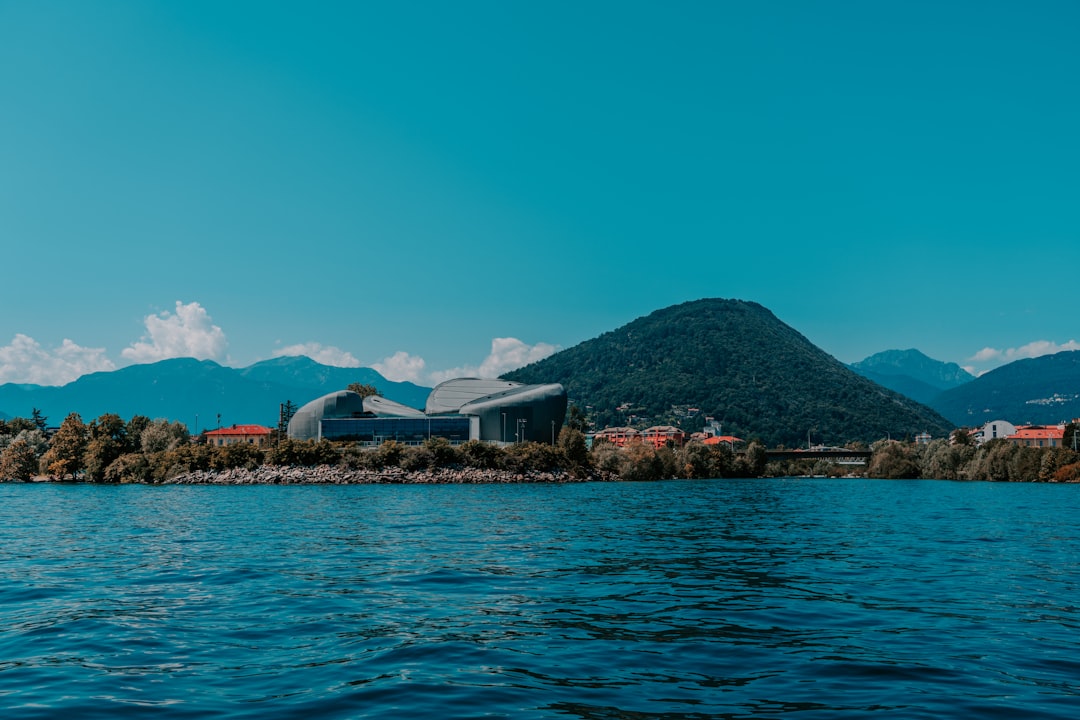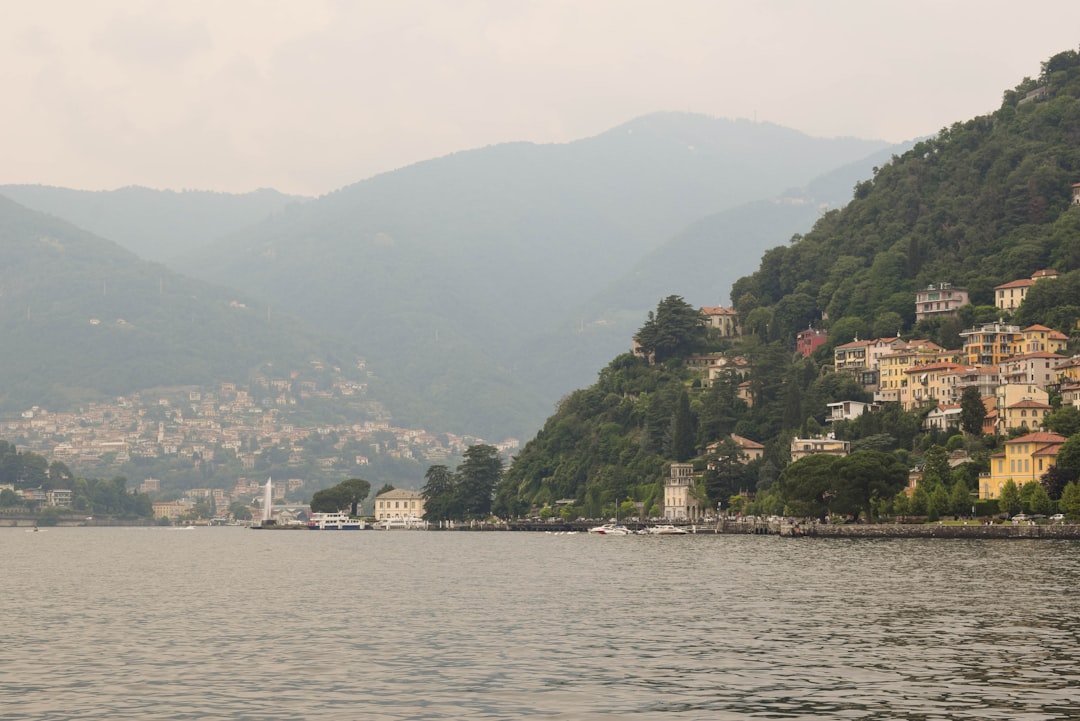Does Boutique Hotel Stresa Live Up to the Social Media Hype on Lake Maggiore
Does Boutique Hotel Stresa Live Up to the Social Media Hype on Lake Maggiore - Translating the Filtered Views to Reality
The contemporary travel landscape is heavily shaped by the visual stories shared online, where highly polished photos and videos, often enhanced or selectively captured, create compelling but sometimes idealized portrayals of destinations and properties. When considering a place like Boutique Hotel Stresa, the online buzz, amplified by attractive photography and potentially influencer posts, sets a certain expectation. The real task for any traveler becomes deciphering whether the stunning visual narrative presented across social feeds genuinely aligns with the tangible experience on the ground. Beyond the aesthetically pleasing scenes of elegant interiors or picturesque lake views that fill digital galleries, a hotel's true measure lies in the quality of guest interactions, the overall feeling of the space, and how well it connects visitors to the actual locale rather than just providing a beautiful backdrop for selfies. Navigating the difference between these meticulously crafted online glimpses and the full, multi-sensory reality of a stay is essential for forming a genuine impression and perhaps recalibrating what makes a travel experience truly worthwhile.
Here are a few observations on how digital overlays shape our perception of place:
It appears that algorithms are designed to leverage certain predictable responses within the human visual processing system, essentially tuning the presented image to resonate more strongly with innate preferences for things like amplified color differences or localized contrast. This can make a photograph of a scene seem inherently more compelling than simply observing the actual view.
Prolonged and frequent exposure to images intentionally manipulated for heightened vibrancy or specific tonal ranges may act as a subtle recalibration mechanism for the visual system. This adaptation can potentially lead to a subjective experience where non-enhanced, real-world environments, including impressive landscapes, appear comparatively muted or less impactful upon direct observation.
Beyond straightforward color adjustments, many digital enhancement processes incorporate geometric transformations. These often involve subtle manipulations of perspective or proportion which, while not always immediately obvious, can significantly alter the perceived scale, depth, or spaciousness of a location as rendered in the image compared to its physical dimensions.
The process of generating and disseminating digitally altered representations of personal travel experiences may contribute to a form of self-reinforcing memory bias. The act of engaging with the curated, enhanced visual record could potentially strengthen its representation in recollection, perhaps favoring the artificial impression over the complexity and nuances of the original sensory data from the trip itself.
There's evidence that specific digital filter settings are correlated with color palettes and contrast levels that are known to influence psychological states or evoke particular emotional responses in observers. By applying these scientifically informed parameters, the creators of filtered images can pre-determine the emotional "flavor" associated with a scene, potentially short-circuiting more nuanced interpretations based on personal experience.
Does Boutique Hotel Stresa Live Up to the Social Media Hype on Lake Maggiore - Locating Prime Selfie Backdrop Areas
For many contemporary travelers, identifying locations that offer strong visual appeal for online sharing is a key part of the journey. A destination like Lake Maggiore, renowned for its impressive natural setting, inherently provides numerous potential scenes. Within this context, sites connected to properties aiming for a notable presence, such as the Boutique Hotel Stresa, become logical places to look for those photo opportunities. These could be particular points along the waterfront with clear lines of sight to prominent features like the islands, or possibly higher vantage points like a rooftop area offering expansive views. These are the kinds of spots that are sought out for that desired shot. However, the evaluation of these supposed 'prime backdrop' areas requires a degree of perspective. It raises the question of whether these visually appealing places feel organically connected to the actual atmosphere and overall experience of being there, or if they primarily function as somewhat artificial stages purely for taking a picture. Discerning if these photogenic corners genuinely enhance the feeling of the location, as opposed to simply being a convenient, static background, is a relevant consideration when moving beyond the surface-level presentation.
Based on observational data and principles from visual processing, several physical attributes of a location appear to correlate with its selection as a backdrop for photographic self-representation:
Analysis of photographic selections indicates a recurring preference for settings characterized by diffuse ambient lighting. Such conditions, often found near large windows or under uniform cloud cover, serve to mitigate harsh shadows and distribute light more evenly across a subject's form, aligning with visual processing tendencies favoring balanced luminance in portraiture.
Spatial analyses suggest that backgrounds exhibiting textural variance alongside regulated complexity tend to enhance the visual prominence of the foreground subject. This characteristic aligns with principles of visual hierarchy and Gestalt psychology, where contextual elements provide visual interest without generating excessive noise that might interfere with the primary focal point.
Engagement with environments featuring notable natural or architectural patterns appears to correlate with increased subjective ratings of a location's photogenic potential. This response is posited to involve specific activations within visual processing areas, contributing to the perceived saliency and desirability of the site for visual recording.
The subjective experience of physical comfort and environmental security at a location is observed to influence physiological markers and expressive displays. This can translate into a more relaxed physical posture and facial affect, characteristics often subjectively assessed as more 'appealing' or 'authentic' in recorded self-images.
Cognitive studies on memory formation suggest a bias towards disproportionately weighting highly salient or 'peak' experiences in recall. In the context of visual environments, encountering an exceptionally striking or unique backdrop can significantly imprint the location's perceived photographic utility in memory, potentially establishing it as a go-to site for future or retrospective visual representation.
Does Boutique Hotel Stresa Live Up to the Social Media Hype on Lake Maggiore - Decoding the Influencer Content Narrative
The content shared by travel influencers often weaves a specific story around places like Lake Maggiore or properties hoping to catch attention, creating a vivid digital expectation. This isn't accidental; it's a narrative built on visually appealing moments and carefully constructed scenes intended to portray an aspirational experience. It's easy to get caught up in this polished online world, where the pursuit of the perfect photo opportunity – the ultimate selfie spot or scenic backdrop – becomes part of the journey itself. Decoding this narrative involves understanding that what you see online is a highly curated version of reality, crafted through intentional storytelling techniques. The challenge for anyone planning a trip is to look past the captivating feed and consider whether the presented story, designed perhaps to generate buzz or highlight specific features, truly represents the atmosphere, feeling, and full experience of being in that location. It’s about separating the digital performance from the actual visit.
Observation of visually processed and curated digital portrayals of travel scenarios appears to engage neurological reward systems within the viewer, potentially generating a psycho-physiological response sequence functionally analogous to the initial stages of processing actual travel experiences, albeit lacking the full spectrum of sensory and spatial data. Furthermore, analysis of contemporary travel booking motivations indicates a statistically significant correlation between a traveler's self-reported destination selection criteria and prior exposure to locations visually represented by certain online figures; a non-trivial subset of these decisions seems weighted more heavily by digital visibility metrics than solely traditional factors. Field observations in locations deemed visually optimal for digital self-representation also document notable temporal investment patterns, with individuals frequently observed dedicating extended periods purely to technical setup, iterative image capture, and pose adjustments rather than prolonged environmental interaction. Investigation into the motivational underpinnings of repetitive visual content generation suggests a strong positive feedback loop mechanism, where the reception of quantitative social validation cues following image dissemination appears to reinforce the behavior of seeking out and documenting locations suitable for generating aesthetically optimized digital output. Finally, analysis of prevalent posing heuristics employed in high-engagement digital travel imagery posits a connection to innate human visual processing preferences, where specific bodily orientations and compositional arrangements utilized may align with pre-existing neurological architectures associated with evaluating social presence or perceived vitality.
Does Boutique Hotel Stresa Live Up to the Social Media Hype on Lake Maggiore - Assessing the Lived Experience Versus the Online Promise
In the contemporary digital landscape, the perception of destinations and hotels, including places on Lake Maggiore like Boutique Hotel Stresa, is heavily shaped by the polished narratives found online. There's often a notable difference between the visually striking imagery curated for social media platforms and the actual feeling and atmosphere experienced firsthand. Evaluating a stay involves discerning whether the property and its surroundings are simply photogenic backdrops, perhaps perfect for collecting aspirational travel photos and selfies, or if the substance of the experience—the service, comfort, and connection to the locale—truly lives up to the online presentation built on digital hype and influencer content. It's a matter of looking past the curated visual promise to assess the tangible reality.
Moving beyond the surface layer of online presentation, examining the cognitive engagement with travel reveals several intriguing observations. For instance, the very act of framing a shot for digital dissemination, particularly when oriented towards social sharing, can subtly redirect attention, potentially diminishing the encoding of crucial non-visual sensory data, leading to a potentially less rich or holistic memory trace of the physical environment encountered. Furthermore, the anticipation of quantitative feedback post-sharing appears capable of introducing a feedback loop, influencing the immediate subjective experience of a place by integrating a future external validation into the present moment's perception. Continuous exposure to digitally modified or selectively presented visual narratives of travel can also establish a baseline of visual expectation within the brain's processing systems that may require conscious adaptation when navigating the less intensely filtered spectrum of real-world inputs. Curiously, the cognitive effort and deliberate structuring required to select, refine, and publish travel content online can, somewhat paradoxically, reinforce the perceived positive value and subjective quality of that trip in the traveler's own subsequent recollection, potentially overshadowing less appealing aspects. Lastly, consistent exposure to the somewhat constrained and often repetitive visual themes propagated through certain digital channels seems to correlate with alterations in viewers' perceptual prediction models for new locations, increasing the likelihood of experiencing a significant divergence between anticipated and actual environmental encounters.
More Posts from itraveledthere.io:
- →From Passport to Passion: How Travel Confidence Enhances Your Kiss
- →The Travel Selfie Trap Do Perfect Photos Hide More Than They Show
- →Decoding the Elevated Travel Selfie Trend
- →AI Travel Photos on Dating Profiles A Reality Check
- →7 Best Photo Spots at Digi Yatra-Enabled Indian Airports for Travel Influencers in 2024
- →7 Most Instagram-Worthy Luxury Spa Settings in Paris for Travel Photography Enthusiasts

